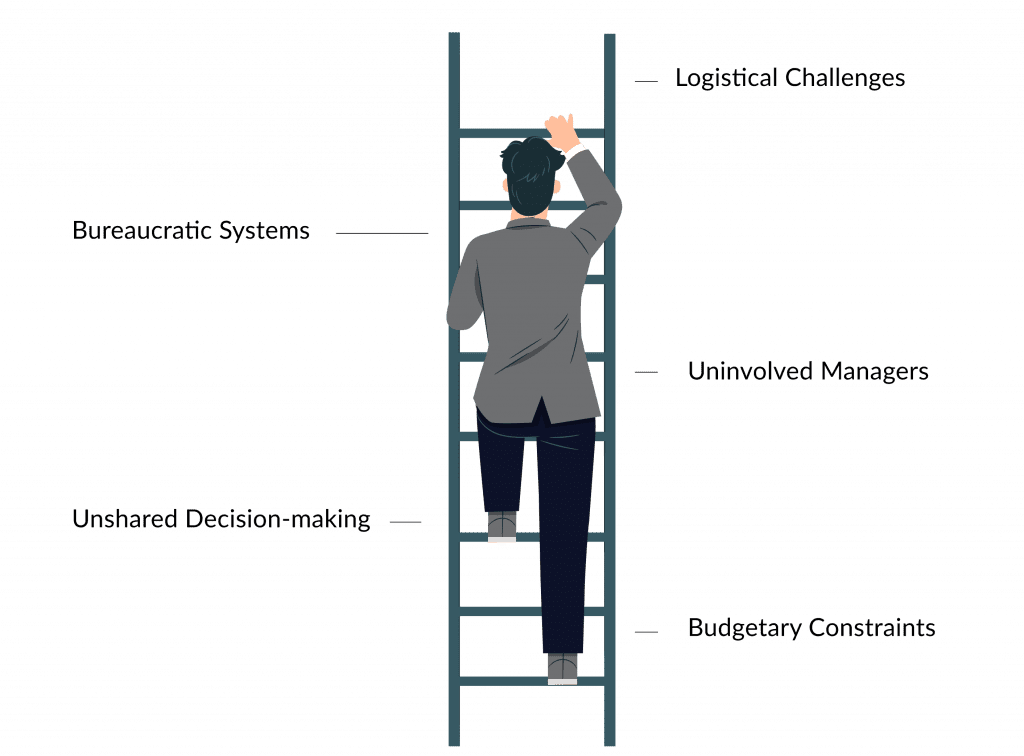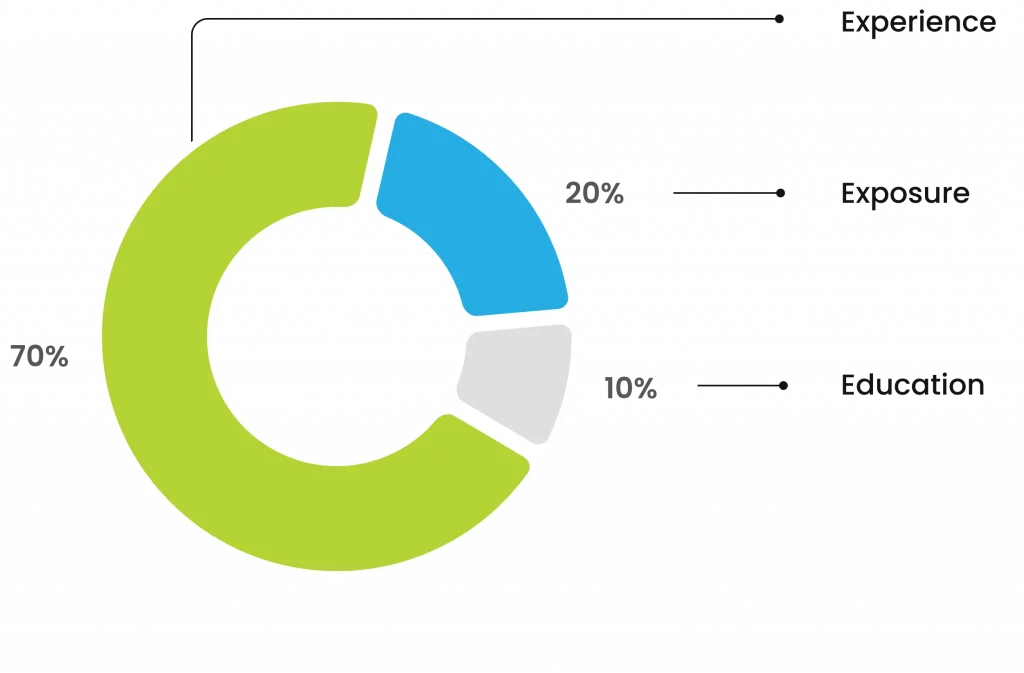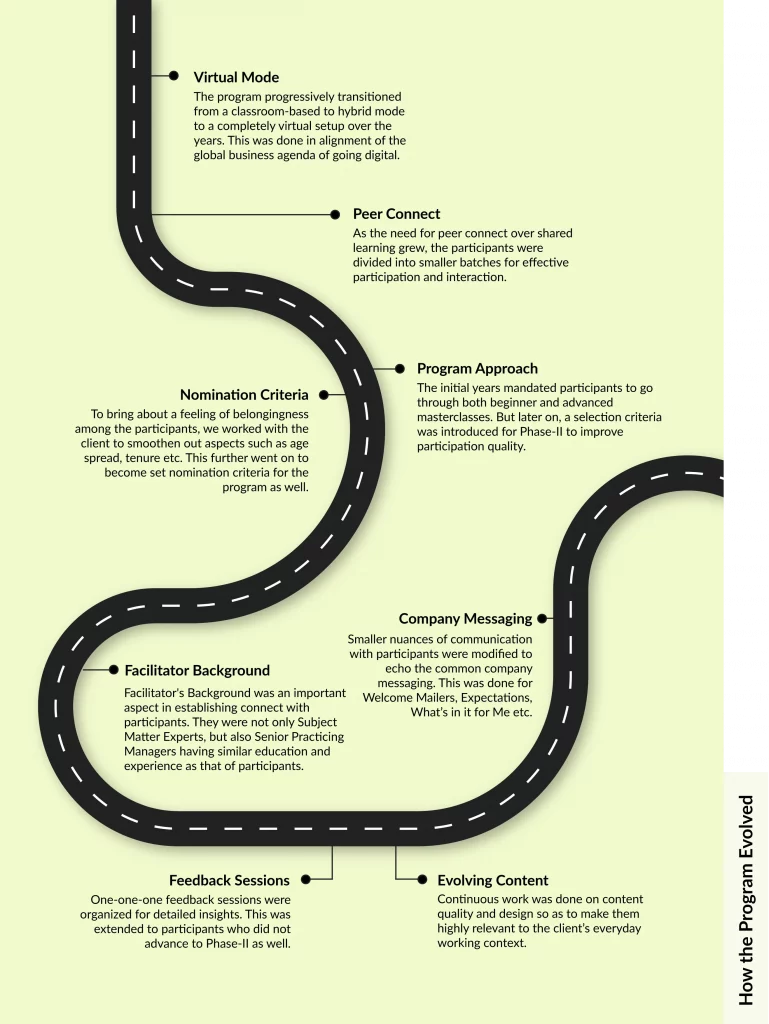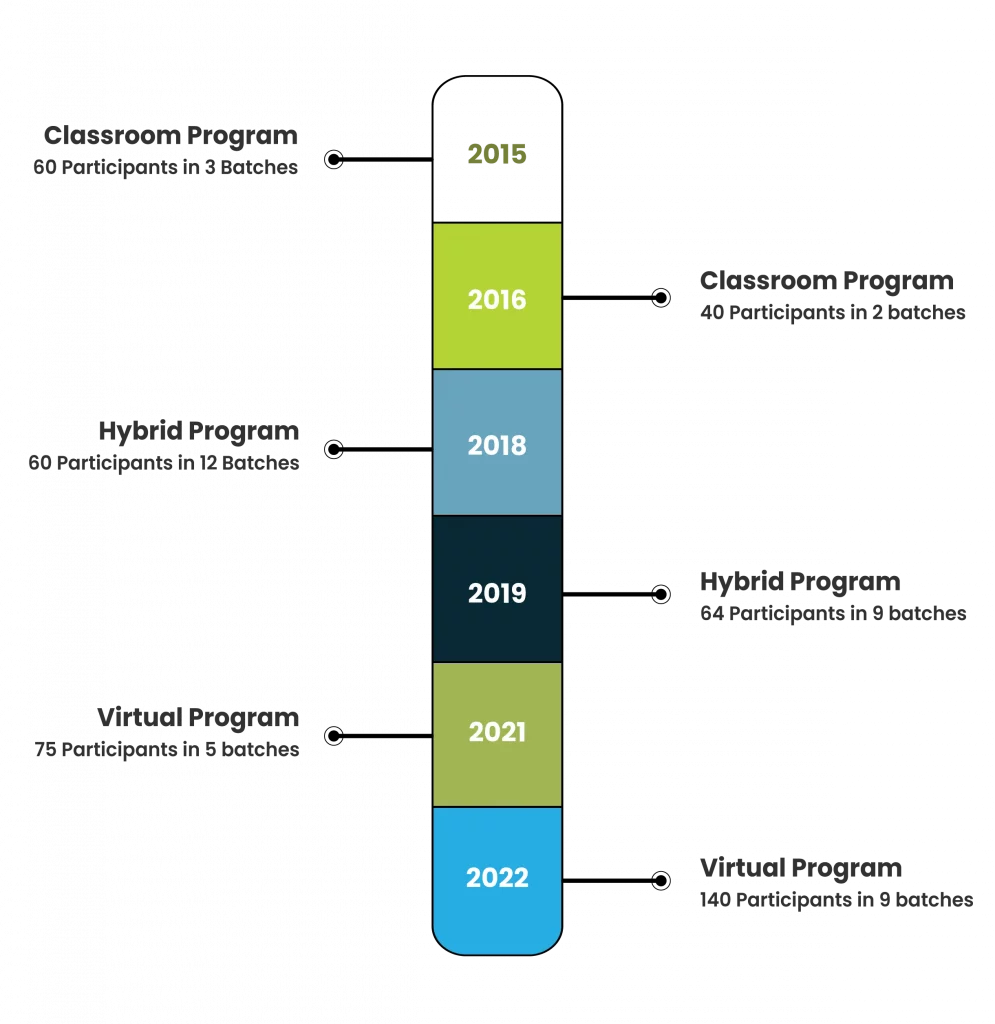Going Contemporary to develop the Leadership Pipeline
Are you staying ahead of the curve?

Introduction
Leadership Pipeline essentially refers to a pool of competent leaders, not just a list of potential candidates, who can fill in for critical roles across organizational levels. It is used to create a more systematic and transparent system of identifying candidates for succession, combined with the processes for their development.
Yet why do so many newly minted leaders miss to make a mark? Why do they end up having so many unanswered questions? Who is responsible to address the doubts? The top leaders or the HR team? Part of the problem is that succession planning in many firms consists of little more than compiling a list of high-potential individuals and the positions they might fill. It’s a mechanical approach that’s too limited and inaccessible to identify and address skill deficits that might derail potential young leaders. It’s also unrelated to initiatives by organizations to transform managers into leaders.
Some companies, however, do succeed in building a consistent and sustainable pipeline of leadership talent by combining succession planning with leadership development. So how should we approach Leadership Development?
Strong leaders at all levels within
an organization are a requisite for
business success. Yet the
leadership pipeline, the internal
architecture for growing leaders, is
often broken or nonexistent.– The Leadership Pipeline (Book)

The Never Ending Questions

How is the money made in this business?

How does it position itself in the market?

How do my efforts impact the business results?

How does my function impact other functions’ ability to contribute?

What must my team contribute to the strategy?

Am I contributing to the competitive advantage?

Has the strategy changed recently or is it likely to change soon?

What is this business trying to accomplish?
The Difference in Approaches for
Leadership Development
Traditional
Talent Management teams approach leadership development having a greater focus on the position and seniority, i.e., the Push learning approach.
- Learning driven by HR
- Focused on Leading through Power of Position
- Typically Classroom-based
- All about control, rules, regulations and boundaries
Contemporary
Talent Management and Top Management team up to have a deeper understanding of leaders’ development needs and strive to make it learner-driven, i.e., the Pull learning approach.
- Learning driven by Employee
- Focused on Leading in a Network
- Prefers Blended Learning
- Encourages freedom of thought, room for creativity, the value of the outcome, and a warm welcome for new ideas
So what’s trending?
Strategic discussions for building leadership pipeline have centred around multiple themes over the years. Below are the major notable trends in the leadership development field over time:
Past
- Proliferation of leadership development methods
- Importance of a leader’s emotional resonance with and impact on others
- Leadership development within the context of work
- Critical reflection about the role of competencies in leadership
development - Revisiting the issue of work/life balance
Present
- Leadership competencies still matter
- Globalization / internationalization of leadership concepts, constructs, and development methods
- Role of technology
- Increasing interest in the integrity and character of leaders
- New ways of thinking about the nature of leadership and leadership development
Future
- Shift to defining leaders by influence, not role
- High-performance organizations (HPOs) to allow managers to self-select involvement in global leadership development programs
- Business performance as a measure of global leadership development effectiveness
The Industry Buzz

Learning is a confluence of will and skill. Focusing on urgent transactional skills may lead to missing out on the more important part, i.e. willingness to commit to learning, and it’s discretionary.

One possible way of ensuring collaboration is introducing new-age learning models such as shared platform.

As development enablers, we should discourage learning as being episodic. We should help individuals to create learning mosaics that come together to give a multidimensional leverage to the overall profile.

People from diverse backgrounds and industries can come together to visualize future opportunities and challenges in business. They can build leaders who can be community leaders and can take learning back into the organization.

Bite-sized learning can’t be the sole solution. It can only stimulate thinking on ideas on what and how to learn. One needs to go through immersive content to be an expert in any given subject.

We need to reinforce the 70-20-10 framework and enable learners to combine training with job experiences, industry exposure and interaction with others.

We are no longer developing leaders and managers for positions we have; rather we are really developing them for positions that don’t even exist right now.

The learners will be deciding what they consume and how they consume. All we need to do is lay out the learning buffet!

We need to be cognizant of biases like the
Dunning-Kruger Effect, where statistically proves that those who know less, think they know more. The lesser you know, the more confident you are of knowing it all! One needs to be intellectually humble.

Learning shift in current times can only happen when we move from curation to engagement and having more strategic conversation around it. Technology can be instrumental in this shift.
Cascading Vision to Action:
A Tricky Road
Even though organizations desire their hipots to take up leadership roles, at times, it becomes difficult to execute owing to several factors such as:
- Lack of proper logistical channels such as digital platforms, content database, etc. hinder the design and implementation of deep interventions.
- Higher the bureaucracy in a system, it becomes more complex to establish a developed leadership pipeline.
- Managers tend to become result-oriented and miss out on giving timely feedback to leaders. Many a time, they miss out being involved in career development of their reportees.
- The decision-making traditionally is owned by HR team and just performance-based inputs are considered while pipeline discussions. Lack of multidimensional inputs and a shared decision-making among HR and senior business leaders affects the quality of such decisions.
- Given the recent pandemic, many organizations are seeing budgetary and funding constraints. They end up in comprising with the quality of interventions.
Navigating through such challenges requires deeper understanding of the organization’s vision and context. One needs to have an intention to leverage technology to overcome these roadblocks.

Challenges

How we enabled a Global Energy Leader to build a large scale blended development initiative for senior leaders
One of our clients, a leading global energy player, aimed to create premier leadership development program for its senior managers across business units and platforms with the primary objective of making them ‘Future Ready’.
As the global operating environment changed, the corporate mission defined a new charter for leadership. It included a significant thrust on developing behaviours like inclusive value creation, internal and external collaboration, thinking digital and innovation.
We partnered with them in India and the subcontinent to develop a 6 month long learning initiative for their senior leaders. The intervention basically targeted to be instrumental in mindset change with simple and comprehensible design aesthetics. It was delivered in a blended learning format with activities such as simulations, case studies, role plays, psychometric assessments etc. The key had been keeping this practical – relevant content, feedback sessions, practicing managers as facilitators, single platform interaction and peer connections.
The key had been keeping this practical – relevant content, feedback sessions, practicing managers as facilitators, single platform interaction and peer connections.
What was the Need?
Leadership Development is key to delivering on strategy.
Our global and local business context is changing, so is the ‘ask’ from our leaders!

Our Senior level leaders play a critical role in driving business success.
We need our leaders to not just be strategy champions and deliver results, but also someone who connects with customers, drives high performing teams and be instrumental in business growth!

We need “readiness” in our leadership pipeline.
Our leaders should be able to deal with increasingly complex business opportunities and scale up to take up bigger responsibilities in near future!
Designing the intervention
After proper understanding of the client needs and context, we designed the program, essentially to create an appreciation for futuristic skills and competencies at the business as well as self-management levels. We considered aspects of how a seamless transition between face to face, high interactive and virtual self paced learning could be done.
Moreover, the participant development planning was based on psychometric tools, role plays andother specially designed instruments and methodologies in context of the group. The program was phased out in two parts, where based on assessment results and participation quality, selected participants can proceed to phase-II of differentiated learning for the top 20% of the group. Here the focus was development considering both the organizational and personal agenda. This culminated into deep introspections, fostering responsibility and enabling action.In fact, to ensure the best in participation, we assigned preparation tasks to participants as well as set clear expectations from them.
Development Philosophy

Development Themes
Leading Self
Leading Others
Leading Business
Program Flow
Phase I
• Focused on Self-Paced and
Connected Learning
• E-learning Modules, Workshops, Interactive Sessions and Panel Discussions
Assessment Centre
• Focused on Evaluation
• Personality Test and Assessment Centres Discussions
• Feedback Sessions
Phase II
• Focused on Personalized and Connected Learning
• Workshops and Panel Discussions
• One-on-one Action Plan and Feedback Sessions
How The Program Evolved
Over the years, we continuously worked together with the client team to analyse performance results, behavioural insights as well as feedback received, with a common aim of improving the program features. Here are few milestone feature enhancements done:

Engagement Overview

Success Anchors

Staying Relevant
We ensured that the program content stays relevant for the participants in the choice of learning themes, peer activities and feedback sessions.

Customized Solution
Integrated development approach, as against pure one-off coaching, we combined different methodologies, psychometric tools and existing work done by the client into our customized offerings and helped the leaders connect the dots well in their minds.

New-age Design
Staying at par with trending industry themes, we incorporated new-age and digital themes into the courses, workshops and assessments.
The seamless flow from focusing on self then at the level of the organization and team, finally culminating it into the context of the industry created very strong and well-rounded experience for the participants. We have covered over 400 people in batches of 40 over the years. Presently the program is a part of the overall leadership development portfolio.
Looking into the future
From a futuristic standpoint, one must be aware of the constantly evolving intricacies of the learning and development domain. Even now, one can analyze multiple facets of the same program and discover ways for improvement. One such aspect is about establishing the relationship dynamics of the Mentor-Mentee in a leadership development program. It’s important to make the participant feel valued in a rush-rush world. One must consider the nitty-gritties of design of the interaction, communication channels, frequency and quality of communication, as well as setting and review of goals. In fact, organizations prefer to nominate successful program alumni as mentors to provide participants an enriched experience.
Summarizing the above, one can choose to leverage on the contemporary methods of leadership development and create augmented digitized programs for their hipots without doing away with the traditional intent. “
One lesson that we all learn pretty early in life is that if we need to be somewhere at a specific time, and we know roughly how long it will take to make the trip to the destination, it is important to begin the trip on time. No combination of speeding or looking for shortcuts enables you to get there on time if you’ve left 15 or 30 minutes late.
Connect with us
For Proposals:
info@thinktalentindia.com
+91-8828158509
For HR & Admin queries:
hr@thinktalentindia.com
+91-9810780846
For Technical Support:
support@thinktalentnext.com
© 2024 Think Talent Services Pvt Ltd. All rights reserved.
